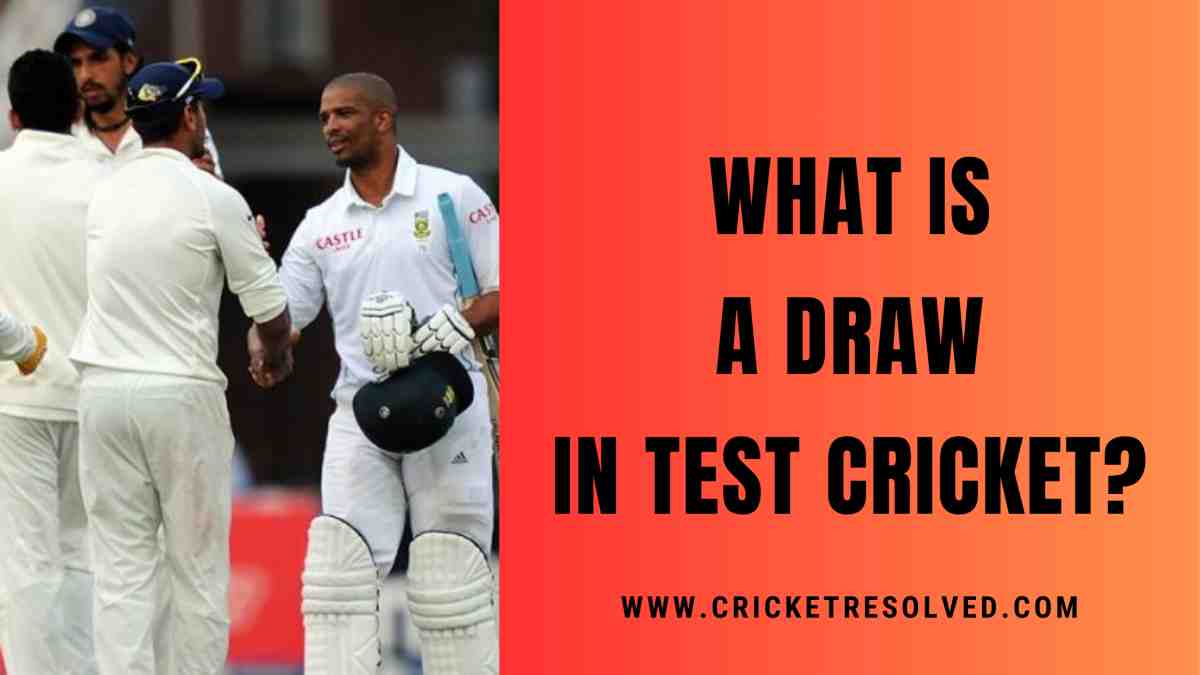
As you know, cricket has 3 different formats — Tests, ODIs, and T20Is. But the Test format amazes cricket fans, with the spectacle spanning across 5 days.
However, despite the cricketing action all over 5 days, the match may not see a winning team or a losing team. Test matches are wide open to either end up in a win, a loss, a draw, or a tie.
In this article, we’ll delve into the rules of a drawn match in Test cricket.
Test Match Draw Rules
A draw is an exclusive result that can happen in a Test match or a First-Class match. You won’t see a limited-overs match ending in a draw.
So what exactly does a drawn Test match mean, and what are the rules?
Of all the results possible at the end of the match, if no team emerges as the winner or the match doesn’t end in a tie, then it’s highly likely the match will be drawn.
A match is said to be drawn if the following things occur in the match:
- All 4 innings are not completed or End of the allotted days
- Equal Scores
- External Factors
Now, let’s understand every condition with an example.
1. All 4 Innings Are Not Completed/End of the Allotted Days
You see, once all 4 innings are completed, the match is either won by a team or a tie has occurred. But if all 4 innings are not completed, that means the match will result in a draw.
Imagine Pakistan and New Zealand are playing a Test match. Pakistan bat first and post 600 runs on the board in the first innings. New Zealand comes out to bat in the second innings, but Pakistan bowls them out for a paltry 190 runs.
Now New Zealand is trailing by 410 runs, and Pakistan enforces a follow-on on the Kiwis. So, New Zealand again bat in the third innings.
This time, the Kiwis respond strongly, surpassing Pakistan’s total and taking a lead of 160 runs before getting all out in the second session of the last day.
If Pakistan wants to win, they need to chase down 161 runs before the match ends on the fifth and last day. However, they fail to reach the mark as they run out of allotted time, with the fourth inning remaining incomplete. This will force the match to result in a draw.
2. Equal Scores
If both teams end up scoring the same runs at the end of the 5 days, the match is recorded as a draw. But doesn’t equal scores mean a tied match? NO.
If the team batting second in the 4th innings is not bowled out when the scores are equal, then the match ends in a draw and not a tie.
Let’s look at the India vs West Indies match that unfolded in a similar manner.
Batting first, the West Indies scored 590 runs in the first innings. In response, India got all out on 482, meaning the Windies led by 108 runs.
Now, the Windies came to bat in the third innings, however, Indian bowlers skittled them for 134 runs. So the Windies set a target of 243 for India to win the match on the last day.
As the match progressed to the last ball of the fifth day, India needed 2 runs to win, with 2 wickets in hand. R. Ashwin hit the ball to complete 2 runs, however, while completing the second run, the fielder ran him out.
This meant India could only equal the total of the Windies, and the match resulted in a draw.
3. External Factors
Now, the external factors can be poor weather conditions like bad light or rain interruptions. If a match cannot be completed due to any interruptions, then the match ends in a draw.
Suppose a match between England and India experiences multiple rain interruptions on the third and fourth days. These frequent stoppages in the match mean a lot of time and overs get lost. And there’s a high chance that both teams may not complete their innings.
Since no team won the match or tied it, the game will be marked as a draw.








